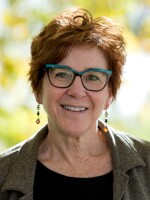This article first appeared in the St. Louis Beacon, Sept. 2, 2011 - A hallmark of Buddhism is the impermanence of people and things. Ironically, an upcoming exhibition exploring the art of Buddhism contains works dating back nearly 2,000 years.
"Reflections of the Buddha," opening Sept. 9 at the Pulitzer Foundation for the Arts, is a collection of 22 Buddhist sculptures and hanging scrolls and three related works. Marking the foundation's 10th anniversary, the exhibit borrows pieces from New York's Asia Society, the Harvard Art Museum and other institutions.Curating the exhibit over the past two years, the Pulitzer's Francesca Herndon-Consagra immersed herself in Buddhism, aided by the curator of Asian art at the Harvard museum. In an interview, Herndon-Consagra shared with the Beacon details of the exhibition and some relevant knowledge of the faith.
Can you provide a Buddhism primer in the context of understanding the exhibit?
Herndon-Consagra: There are three key principals. One is that all things are conditional and impermanent and in a state of constant change. Because of this, people die, flowers wilt.
Second, all things are dissatisfactory; you could be a gazillionaire, and you're still going to be unhappy. You could be happy one moment, sad the next -- it's like looking at the clouds.
Third, we're basically hollow; we don't have a spirit after death, but our karma lives on and is reborn. The Buddhists hope that once you realize everything is hollow, then that emptiness will be filled compassion and love. That relates to our building because, when you walk in, you notice the lack of adornment and this increased sense of silence and emptiness. That is what [Pulitzer Foundation building architect] Tadao Ando is after.
Can you say more about how this exhibit is a good fit for Ando's design?
Herndon-Consagra: The architect is not connected to a Buddhist sect, but he is heavily influenced by Japanese culture, which has a lot of tradition in Buddhism. Ando really wants to tap into the human spirit, to the invisible, in the sense that his spaces are vessels for subjective emotion.
if you've ever walked into a dark but really really simple sanctuary, sometimes in those spaces -- if you open yourself up to it -- you will look inward to deep within you. That's what Ando, and that's what the Buddhists hope you will do, connect with the emptiness of the space.
The wonderful movement of light through the building refers to the idea of constant change. When you go to exhibit in a white box without any natural light, you don't sense this constant change, which is part of the impermanence.
These are not just beautiful objects in a beautiful building; they are powerful objects in a powerful building, and they were both created to be transformative.
What is the meaning behind the word "reflections" in the exhibition's title?
Herndon-Consagra: It is said that an artist went up to this heaven to create an image of the Buddha, but he was so blinded by the Buddha's radiance that he said, "I can't do it."
And the [historically named] Buddha Sakyamuni says, "Don't worry, I will stand next to a pool and you can render me from my reflection." I took that and used it as a metaphor as to how Buddhism has been reflected by cultures.
How are religion and spirituality specifically expressed in "Reflections"?
Herndon-Consagra: Human beings have long been interested in creating objects such as talisman or icons.
A talisman is oftentimes a little charm, inside of a sculpture. It's a way of asking the deity to protect you. An icon is a consecrated image, and through ritual, you have the deity embody the statue or the work of art, and when worshippers come to that object they are connecting to that deity one on one.
Trying to understand fully the original institutional and ritual contexts of a Buddhist image that is now in a museum may be problematic partially because it is difficult to determine a function on the basis of appearance alone and on the high probability that a single object had multiple functions.
Several of the larger works in the exhibition may well have been consecrated as icons: the "Standing Buddha Amitabha" from mid-13th century Japan was likely the central figure of a small altar and the "Standing Buddha Sakyamuni" from late 6th-century China was probably the central figure of a group of marble sculptures in a cave sanctuary.
The sculpture of Prince Shotoku was filled with more than 70 individual items inside, including a variety of miniature devotional statues, some of which were unaffiliated with Shotoku This suggests that the sculpture functioned as an icon, a repository for Shotoku's spirit, as well as a talisman, a place to harbor the magical powers of other deities as a way to help stave off misfortune or reaping good blessings.
The exhibition closes with a film by Oscar Munoz. What is the relevance of a Colombian, non-Buddhist filmmaker to Buddhism?
Herndon-Consagra: Oscar Munoz focuses on impermanence. He comes from war-torn Colombia and he does a wonderful body of work in which he is trying to express the pain and suffering of his countrymen.
So many people have either disappeared or have been murdered, whether for political reasons or drugs or whatever. Munoz is saddened by the fact so many of these murdered or disappearing people leave the consciousness of their friends and families.
In his two-minute video, the artist has a pool of water in his hands, and his reflection, his face, is in that pool of water. Within two minutes, this pool of water in his palm slowly goes through his fingers. That not only deals with the impermanence in life, but also with the idea of the no-self.
I wanted to do something contemporary by a non-Buddhist artist to show that the Buddhists are tapping into human concerns, regardless of sectarian ideas.

